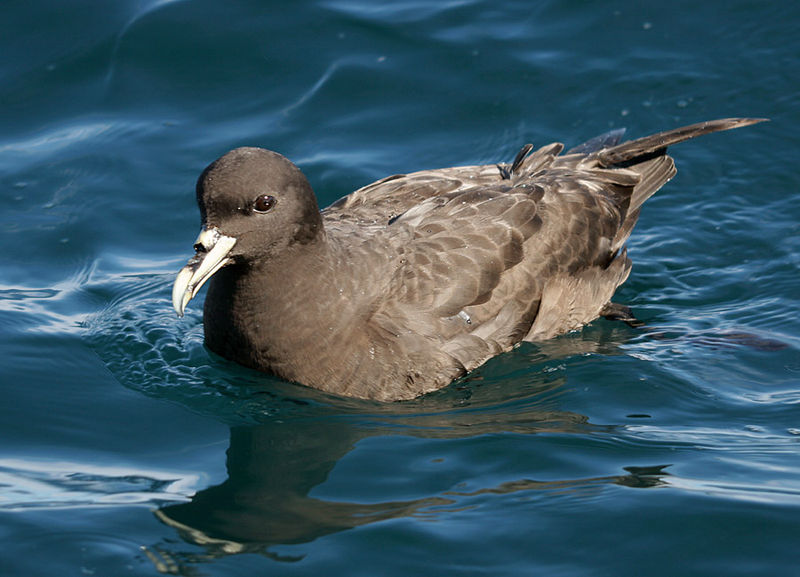Colours
Distinguishing features
Not only is it the largest Procellaria petrel but is also the largest species in its family outside of the giant petrels. This large petrel is sooty-black and has some white on its throat and chin, more so in the Indian Ocean sector than the Atlantic . Its primaries can have a silvery appearance underneath. Its bill may be horn or yellow with a black tip, and also black between the nostrils. It has black feet. When it flies, it mixes slow wing beats with glides. (Wikipedia)
Size
- From 51 cm to 58 cm (Length of specimen) - applies to Adults
Wingspan
- From 134 cm to 147 cm
Synonyms
Distribution

©Atlas of Living Australia: Australian distribution: White-chinned Petrel (Procellaria (Procellaria) aequinoctialis)
Distribution and habitat preferences
The White-chinned Petrel utilises many islands during the breeding season. 2,000,000 pairs breed on South Georgia, Between 175,000 and 226,000 pair are on the Kerguelen Islands, and 100,000 pair on Disappointment Island. The Crozet Islands, Prince Edward Islands, Campbell Islands, Auckland Islands, the Antipodes Islands, and the Falkland Islands. During the non-breeding season, the petrels fly from the Antarctic pack ice to the subtropics. (Wikipedia)
Diet
Their diet is composed mainly of krill followed by fish. White-chinned Petrels feed by surface seizing and by undertaking shallow dives, and they will readily follow ships to collect fisheries discards, making them vulnerable to long line fisheries. (Wikipedia)


